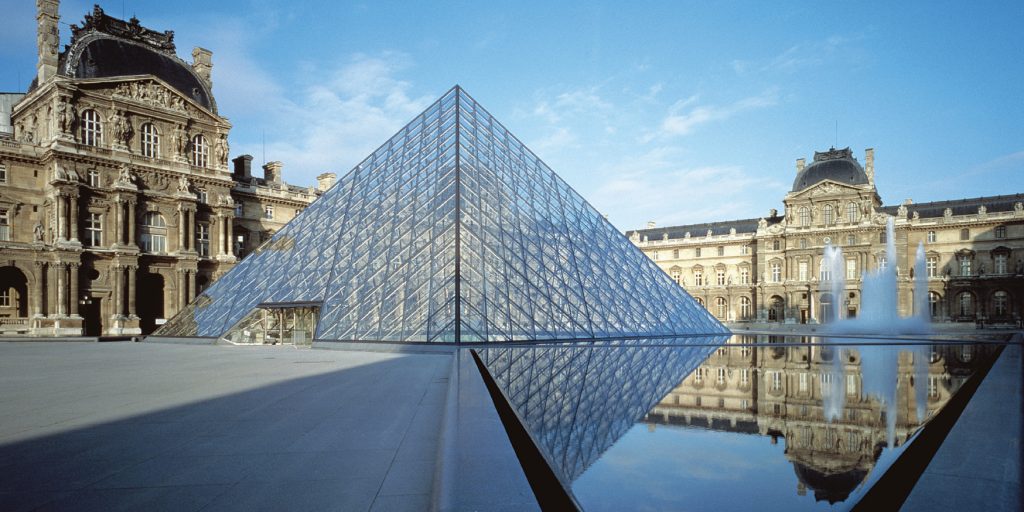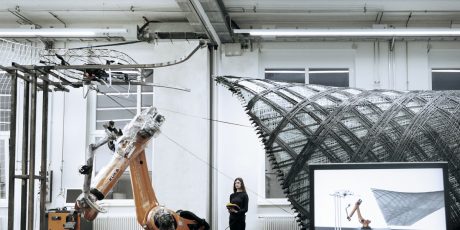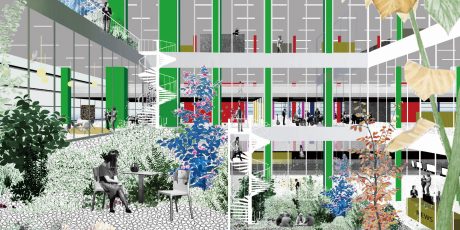Interviews I.M. Pei and Fumihiko Maki Discuss Reorganizing the Louvre
The following text is an excerpt from this conversation, in which Pei and Maki think back on the challenges he faced—architecturally, culturally, and politically— in adding to the Musée du Louvre during the 1980s. Explore the rest of the conversation here.
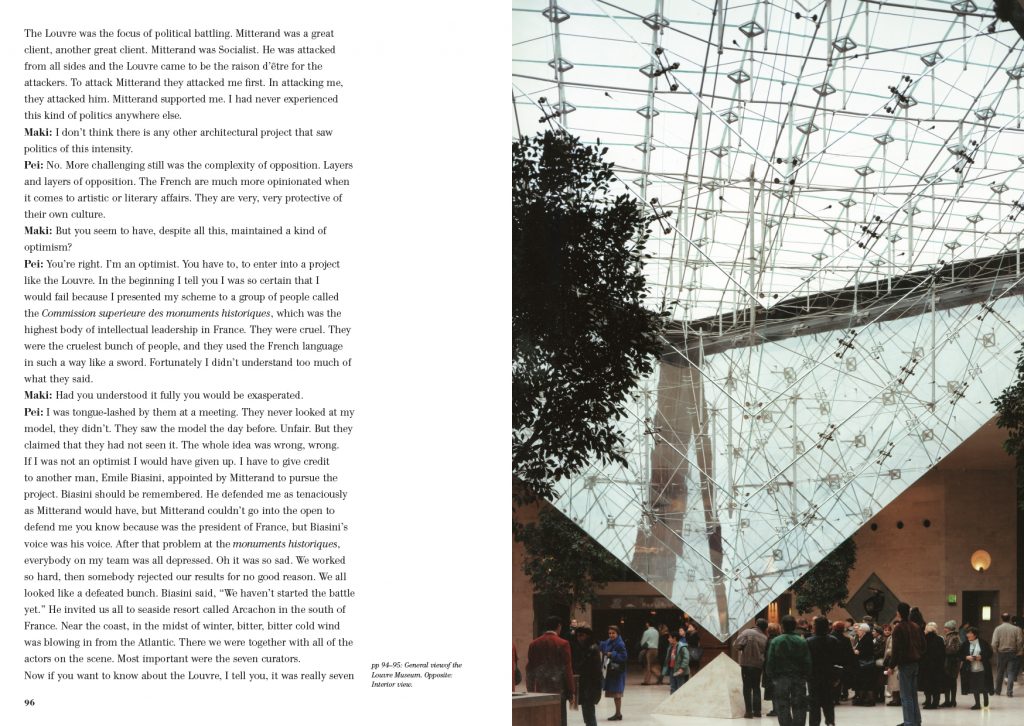
Reorganizing the Louvre
Fumihiko Maki: Famous architects are always remembered by one or two representative projects. Kenzo Tange by the Olympics stadium, Philip Johnson by the Glass House, Frank Gehry probably by Bilbao. In a sense, these buildings are selected by society at large rather than by the architects themselves. At the same time, architects usually have one or two projects they are very attached to personally. Do you have any projects like this?
I.M. Pei: You’re asking a man who has many daughters (chuckle).
Maki: And you have to love all of them? If you have to choose just one?
Pei: I would say the Louvre.
Maki: The Louvre?
Pei: The Louvre is a project that tested one in all aspects of architectural challenge. All aspects. First and foremost was history. The Louvre goes back to the 12th century. It is 700 years old. It was a home of kings, a place for revolution. What else is there? Which country can claim such a thing? Japan’s Ise shrine? No, no revolution there, nobody got killed there, no kings lived there. China’s Forbidden City? No, the Forbidden City is only since Yuan dynasty. The Louvre embodies the history of France.
Second was culture. The cultural tradition of France is the Louvre. It’s not Chartres. It’s not those great cathedrals. Romanesque? Yes, wonderful. I consider Romanesque more important than Gothic. But the cultural tradition of the Louvre is without equal not only because of its collection of art but also because of the building, the great rooms inside the Louvre. There are so many great rooms. They were all made by the most important designers: LeBrun, Mansart, Le Vau. Great designers like them, and successive generations adding to it. They all tried to add on, add on and add on, until Napoleon III when it stopped. At the Louvre you have an accumulation of history, of artistic work. It was a challenge of incredible proportions.
Third was society. French society as a whole looks at Louvre as theirs. It belongs to them, it’s their palace. It is not really Louis XIV’s. The collection belongs to them and not to Napoleon. You have a society that looks upon this as a national treasure, not to be touched by anybody else, even a Frenchman, even French architects. I was an Oriental from America, which was not popular. It’s better to be Chinese than to be American (chuckle). Yes, it would be easier for me to be there as a Chinese architect than to be an American, but then Chinese American… The problem was to get acceptance. It was very difficult. In the beginning, all of France was against me. Not because they didn’t think I had the qualifications. Some people just didn’t think the Louvre was something I should touch. To them it’s sacred. But then the Louvre had to change. Now that was the one thing that saved me, the need for change.
This brings us to the fourth challenge, politics. The Louvre was the focus of political battling. Mitterand was a great client, another great client. Mitterand was Socialist. He was attacked from all sides and the Louvre came to be the raison d’être for the attackers. To attack Mitterand they attacked me first. In attacking me, they attacked him. Mitterand supported me. I had never experienced this kind of politics anywhere else.
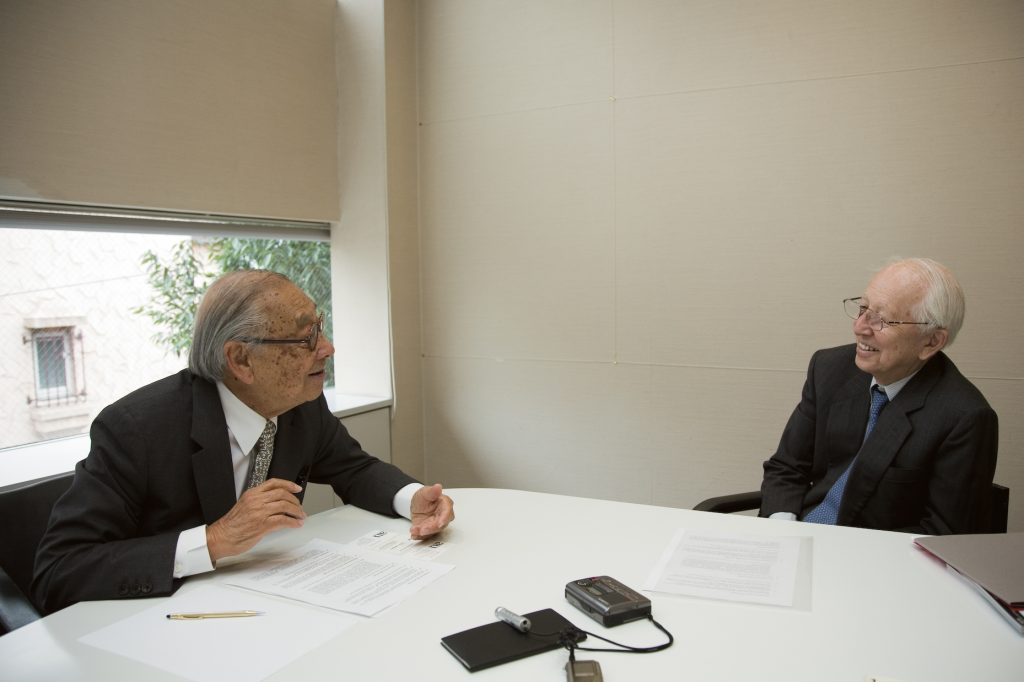
Maki: I don’t think there is any other architectural project that saw politics of this intensity.
Pei: No. More challenging still was the complexity of opposition. Layers and layers of opposition. The French are much more opinionated when it comes to artistic or literary affairs. They are very, very protective of their own culture.
Maki: But you seem to have, despite all this, maintained a kind of optimism?
Pei: You’re right. I’m an optimist. You have to, to enter into a project like the Louvre. In the beginning, I tell you I was so certain that I would fail because I presented my scheme to a group of people called the Commission superieure des monuments historiques, which was the highest body of intellectual leadership in France. They were cruel. They were the cruelest bunch of people, and they used the French language in such a way like a sword. Fortunately, I didn’t understand too much of what they said.
Maki: Had you understood it fully you would be exasperated.
Pei: I was tongue-lashed by them at a meeting. They never looked at my model, they didn’t. They saw the model the day before. Unfair. But they claimed that they had not seen it. The whole idea was wrong, wrong. If I was not an optimist I would have given up. I have to give credit to another man, Emile Biasini, appointed by Mitterand to pursue the project. Biasini should be remembered. He defended me as tenaciously as Mitterand would have, but Mitterand couldn’t go into the open to defend me you know because was the president of France, but Biasini’s voice was his voice. After that problem at the monuments historiques, everybody on my team was all depressed. Oh it was so sad. We worked so hard, then somebody rejected our results for no good reason. We all looked like a defeated bunch. Biasini said, “We haven’t started the battle yet.” He invited us all to seaside resort called Arcachon in the south of France. Near the coast, in the midst of winter, bitter, bitter cold wind was blowing in from the Atlantic. There we were together with all of the actors on the scene. Most important were the seven curators.
Now if you want to know about the Louvre, I tell you, it was really seven independent museums each led by its curator. The seven curators were all independent. Each department: sculpture, painting, decorative arts, just name them, all of them were independent. They all competed for the same funding from the state, the same amount of money. They all competed for space in the museum. They fought against each other. All of them came together and talked. It was at that meeting we had a breakthrough.

Maki: So that made it particularly memorable.
Pei: Memorable not because of what was done, but because of the battles, battles that were fought daily. It was unlike any of my other projects. In the end, the greatest accomplishment was not the pyramid. You can do a better pyramid.
Maki: (chuckle)
Pei: Not the pyramid, it was the organization under the pyramid, joining all seven departments together. Underground, they can now move around the Mona Lisa in complete safety. All the competition for space was relaxed by one proposal.
Maki: So really you made a city of museums.
Pei: Made it one, made the museum one. I united the seven curators to stand behind me. When you get seven voices from the museum then all the public attacks gradually, gradually subsided. Because the museum curators said it’s good, it was good for them. You probably know that I covered two courtyards. I created space they never had before. Now having covered the two courtyards, there was more space. They were fighting for space. The department of sculpture got the courtyards, so they relinquished other space to the department of decorative arts.
Now the unification of Louvre would not have been possible without the plan. You know that’s the great accomplishment, not architecture as such but the reorganization of the museum.
Maki: But that is a part of architecture.
Pei: Yes, it’s a part of architecture but in this case it’s the most important part, as opposed to the pyramid, which was only the icon.
